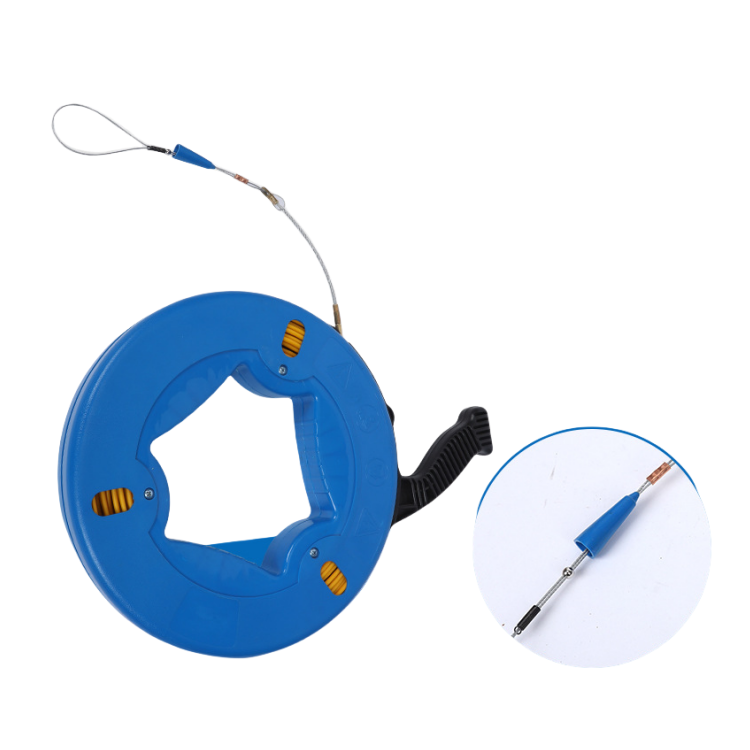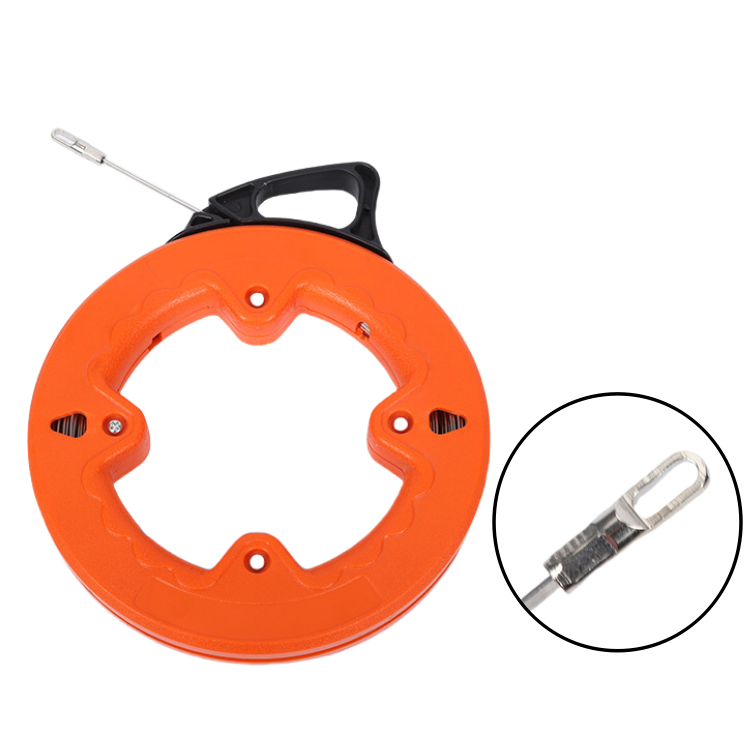How a Wire Pulling Tool Makes Conduit Installation Faster and Easier
Author:jiujiu Release time:2025-11-12 10:51:23 Number of views:114order
The Smart Way to Handle Electrical Conduit Installation
Running electrical wires through conduits is one of the most technical steps in any installation project. Electricians often face narrow bends, long conduit runs, and hidden pathways that make manual wire feeding slow and risky. That’s where a wire pulling tool becomes a game-changer.
This simple but powerful device allows professionals to pull cables smoothly through conduits without damage or frustration. As a China manufacturer offering bulk supply of wire pulling tools, we’ve seen how the right tool not only increases productivity but also ensures greater safety and precision during every job.


1. Lower Friction, Better Cable Protection
The main challenge during conduit installation is friction — the resistance between the cable’s insulation and the inner wall of the conduit. Excess friction can cause abrasion, twisting, or even wire insulation failure, which leads to performance issues later on.
A wire pulling tool minimizes this problem. The pulling line or tape guides the cable through the conduit first, creating a smooth channel for the wire to follow. When used with cable lubricant, it allows even thick or multiple conductors to glide effortlessly through long or curved conduits.
This method not only reduces damage but also helps maintain consistent electrical performance across all connections.
2. Reducing Labor Intensity and Time
Traditional conduit wiring often requires several workers pushing and pulling wires manually. It’s exhausting, time-consuming, and sometimes unsafe.
With a wire pulling tool, one technician can handle the task efficiently. The tool’s design provides mechanical advantage, reducing both effort and installation time. This means faster project completion, lower labor costs, and fewer delays — especially on large or multi-floor projects.
For contractors managing frequent installations, sourcing these tools directly from a China supplier providing batch or OEM supply can significantly reduce operational expenses.
3. Improving Installation Safety
Safety is a top priority in electrical work. Pulling cables without the right equipment increases the risk of damaged insulation, short circuits, or electric shocks.
A well-designed wire pulling tool helps electricians maintain control, ensuring the wires are properly aligned and tension is evenly distributed. Fiberglass and nylon models offer non-conductive properties, making them ideal for installations near live circuits or energized panels.
These safety advantages make the tool an essential part of any professional electrician’s kit.
4. Handling Complex or Long Conduit Runs
Modern buildings often require complex conduit layouts with multiple bends and varying elevations. Feeding a wire through by hand can quickly turn into a frustrating task.
A wire pulling tool simplifies the process. The flexible pulling tape or line easily navigates turns, corners, and long horizontal sections. Once the line reaches the other end, the electrical cable can be attached securely and drawn back smoothly.
This approach saves time, prevents unnecessary strain on cables, and ensures a clean, damage-free installation — even in hard-to-reach or concealed areas.
5. Boosting Efficiency in Large-Scale Projects
For contractors working on industrial, commercial, or large residential developments, efficiency and reliability are crucial. A high-quality wire pulling tool ensures consistent performance across all conduit systems, from power lines to data cables.
Many professional installers now prefer sourcing tools directly from China manufacturers with bulk supply capacity, as this ensures uniform quality and cost efficiency for recurring projects. Reliable supply chains also make it easier to maintain equipment inventories without delays.
6. Choosing the Right Type of Wire Pulling Tool
Not every job requires the same type of tool. Selecting the right model makes a significant difference in ease of use and performance:
·Steel wire pulling tool – Offers exceptional strength for long, straight conduit runs.
·Fiberglass wire pulling tool – Non-conductive and flexible, perfect for tight spaces or live installations.
·Nylon or polyester pulling line – Lightweight and ideal for short or medium conduit systems.
Understanding the environment and task type helps ensure you use the right material, reducing unnecessary wear and maximizing pulling efficiency.
7. Maintenance for Long-Term Performance
Even the most durable wire pulling tools require proper care. To maintain performance and extend lifespan:
·Inspect before use for cracks or kinks.
·Clean after each job to remove dust and debris.
·Lubricate if necessary to ensure smooth retraction and operation.
·Store in a dry, organized place to prevent corrosion or deformation.
Following these maintenance steps guarantees that your tools remain reliable and ready for the next project.
Conclusion: The Right Tool Defines the Quality of Work
In every aspect of electrical installation, having the right equipment determines both the speed and quality of the job. A wire pulling tool eliminates unnecessary struggle, improves accuracy, and keeps cables safe from damage.
For professionals and contractors looking to optimize workflow, choosing a reliable China manufacturer with bulk supply capability is the smartest way to ensure steady access to high-performance tools at competitive costs.
From small-scale wiring to industrial conduit systems, the right wire pulling tool transforms a demanding task into a smooth, controlled, and efficient process — saving time, effort, and expense on every installation.
References
GB/T 7714:Fee J M, Fee M J. A study of tension and jamming when pulling cable around bends[C]//1999 IEEE Transmission and Distribution Conference (Cat. No. 99CH36333). IEEE, 1999, 1: 100-105.
MLA:Fee, John M., and Michael J. Fee. "A study of tension and jamming when pulling cable around bends." 1999 IEEE Transmission and Distribution Conference (Cat. No. 99CH36333). Vol. 1. IEEE, 1999.
APA:Fee, J. M., & Fee, M. J. (1999, April). A study of tension and jamming when pulling cable around bends. In 1999 IEEE Transmission and Distribution Conference (Cat. No. 99CH36333) (Vol. 1, pp. 100-105). IEEE.







